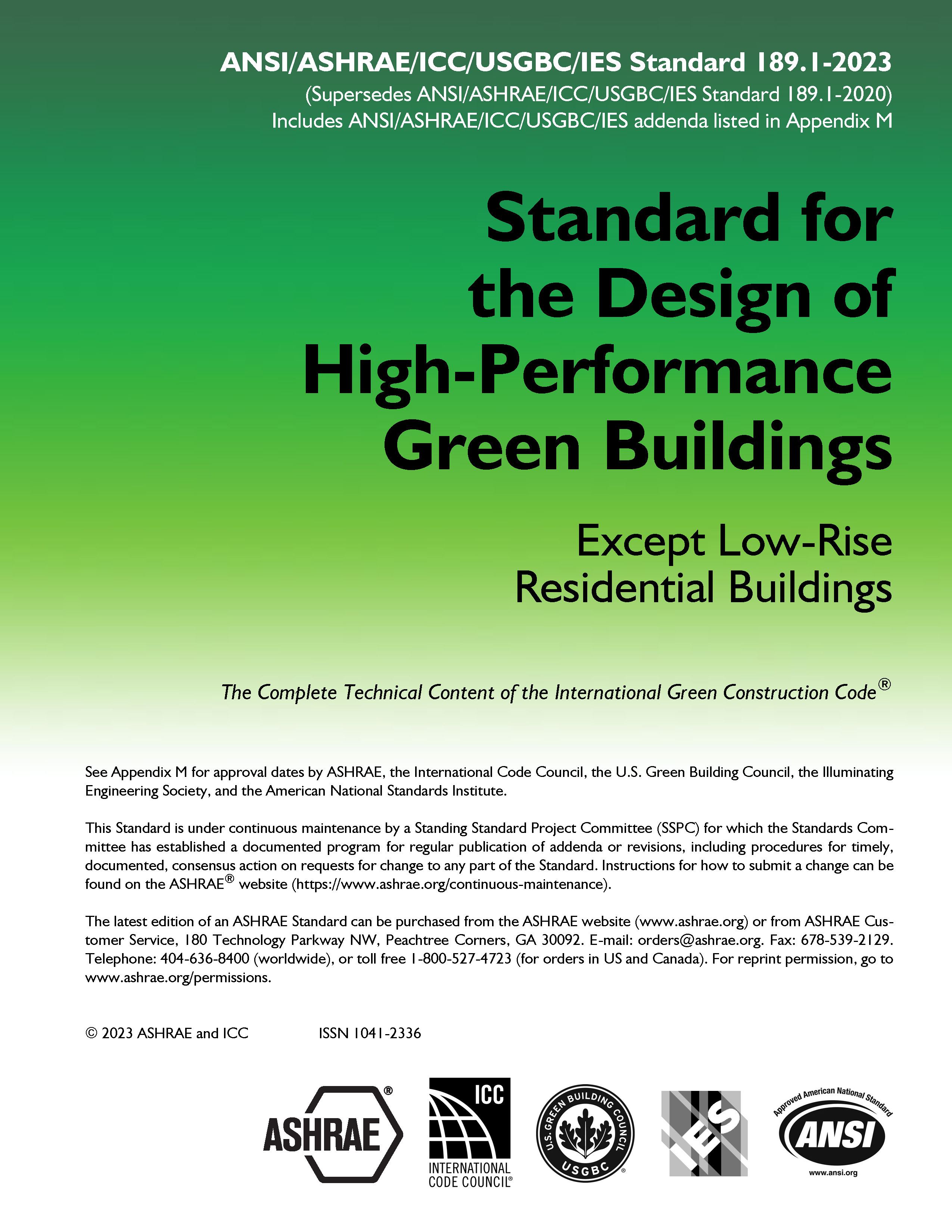ASHRAE’s High-Performance Green Building Standard Moves the Needle on Sustainability

Standard 189.1 provides total sustainability guidance for designing, building, renovating, and operating high-performance green buildings. From site location to energy use to recycling, this standard sets the foundation for green buildings by addressing site sustainability, water use efficiency, energy efficiency, indoor environmental quality (IEQ), and the building's impact on the atmosphere, materials and resources.
Standard 189.1 serves as the complete technical content of the International Green Construction Code® (IgCC®).
The 2023 edition of Standard 189.1 arrives with exciting updates, including changes that aid in building decarbonization:
-
General
- An updated scope clarifies the standard’s application to sites and to the demolition and deconstruction of buildings, and provides guidance on changes of occupancy or use in buildings.
- New language allows authorities having jurisdiction to disallow improper installation of equipment in a building project.
- Direction is provided for the regulation of used materials and equipment.
Site
- Residential electric vehicle (EV) charging requirements are separated from nonresidential requirements.
- New provisions are added for EV-capable parking spaces, and compliance options are expanded based on percentage of total parking spaces.
Water
- Landscape design language is simplified, and reasonable exceptions are added for select site uses and settings.
- Electronic leak detection requirements are added for buildings and certain end uses.
- Hot-water efficiency requirements are updated by removing the need for pipe volume calculations.
- Commercial kitchens are made exempt from hot-water design requirements.
- The definition of “potable water” is now in alignment with the International Plumbing Code.
Energy
- Additional efficiency credits have been harmonized with Standard 90.1-2022.
- Increased lighting efficiency is reflected in lower lighting power density targets and requirements.
- A jurisdictional option is added for electric-ready that requires branch circuits or raceways to be installed where fossil-fuel-fired equipment is installed.
- Advanced lighting requirements for indoor grow spaces and greenhouses are added, and the lighting is required to be powered by renewable energy.
- Advanced lighting requirements are added for indoor grow spaces and greenhouses.
- New requirements are added for electric-water-heater demand response.
Energy Modeling
- The Performance Option is relocated and updated to include new CO2e and Building Performance Factor data.
- Compliance with three metrics—PCI, zCEF, and zEPI—is now required.
- A new long-run marginal emission rates (LRMER) jurisdictional option is added with the calculation guidelines and tables in Normative Appendix D.
Indoor Environmental Quality
- Soil-gas control requirements are improved to reflect current industry practices that incorporate ANSI/AARST mandated measures in new building construction projects.
- Building resiliency is improved with the ability to adjust ventilation quickly and easily in response to air-quality-related emergency conditions, such as nearby wildfires, chemical spills, or pandemics.
- MERV 13 filters are now required in outdoor airstreams for all buildings located in nonattainment areas.
Materials and Resources
- Prescriptive and performance paths are eliminated and now appear as alternatives under “Material Selection.”
- Considerations are added for reuse of materials.
- The standard now requires submittal of environmental product declarations (EPD) for products meeting specific criteria, as well as the reporting of total global warming potential (GWP) from those products.
Construction and Plans for Operation
- Building flush-out requirements are deleted, and additional ventilation is required prior to occupancy and during initial occupancy.
- Contaminant monitoring requirements are updated for initial occupancy and include providing the owner a report with graphical trends and recommendations.
Important message
Standard 189.1 serves as the complete technical content of the International Green Construction Code® (IgCC®). Standard 189.1 is only available for sale outside of the U.S. and Canada. Customers within the U.S. and Canada should purchase the appropriate edition of the IgCC.
PURCHASE STANDARD 189.1 (Customers outside the U.S. & Canada)
Purchase the IgCC (U.S. and Canadian customers)